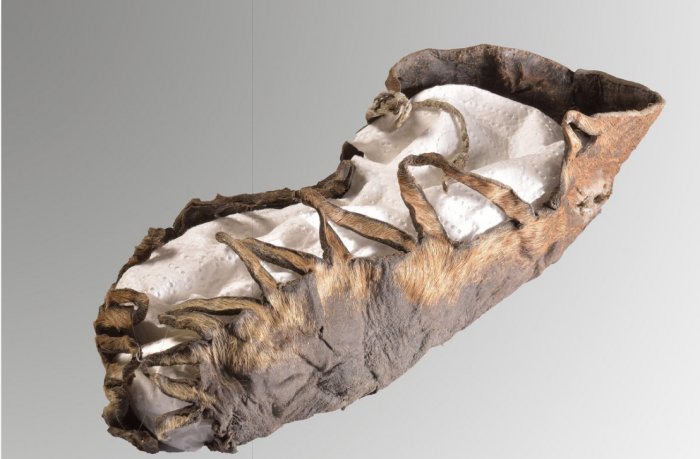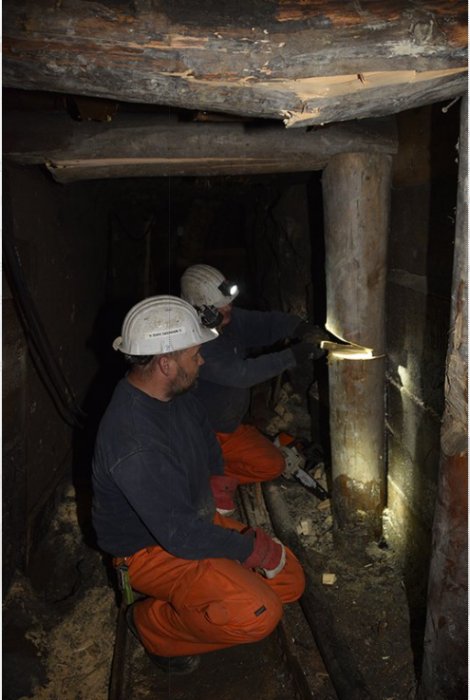Extremely Well Preserved 2,000-Year-Old Child Shoe Discovered In Salt Mine
Scientists conducting mining archaeological investigations have discovered an extremely well-preserved 2,000-year-old child shoe in a salt mine!
The special find was made by the German Mining Museum Bochum, Leibniz Research Museum for Georesources.
Excavations were carried out under the direction of the head of the research area, Prof. Dr. Thomas Stöllner. The Dürrnberg near Salzburg, Austria, is known for its rock salt mining, which already took place in the Iron Age.

Due to the preservation effect of the salt, organic remains are in particularly good condition in contrast to other excavations, where such finds are in short supply. During this year’s campaign in the Georgenberg tunnel, a children’s shoe made of leather came to light. It roughly corresponds to today’s shoe Euro size 30 (7.25 inches – 18.4 cm).
“For decades now, our research activities on the Dürrnberg have repeatedly provided us with valuable finds in order to scientifically develop the earliest mining activities.
The condition of the shoe that was found is outstanding,” says the head of the research area, Prof. Dr. Thomas Stoellner, in a press statement.
“Organic materials usually decompose over time. Finds such as this children’s shoe, but also textile remains or excrement, such as those found on the Dürrnberg, offer an extremely rare insight into the life of the Iron Age miners. They provide valuable information for our scientific work.”

The research work on prehistoric salt production at Dürrnberg near Hallein in Austria is part of a long-term research project. Credit: German Mining Museum Bochum
In the immediate vicinity of the find, the archaeologists discovered further organic remains: a fragment of a wooden shovel in the shape of half a shovel blade and the remains of fur with a lacing. Possibly, these belonged to a fur hood.
Excavations will continue over the next few years. The aim is to open up the entire extent and thus obtain the most comprehensive information possible about the work of the Iron Age miners and their way of life.
In addition, scientists will attempt to determine the size of Dürrnberg’s mining halls.
These types of mining archaeological excavations and research methods provide important insights into areas of life that cannot yet be documented and researched from other sources.